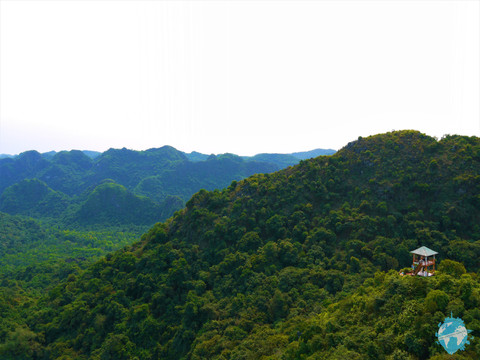Cat Ba Island Is A Must When Visiting Halong Bay
- The Roving Route
- Feb 26, 2020
- 4 min read
Updated: Nov 1, 2021
The Adventures of The Roving Route #23
This Week
Cat Ba Island is absolutely gorgeous! We highly suggest anyone who is going to Halong Bay to spend the time to get across to the island.

This island is massive with dense jungles, steep rock cliffs, many caves, and during the time we visited, no tourists. The best way to explore the island is on a motorbike, and luckily our special guest, Margot, was excited to give it a try. Jumping on to two bikes, we set off for a few days of exploration! Almost two-thirds of this island is conserved as a national park and is the sole home to the world's most endangered primate. With only 60 left in the world, they are extremely hard to find but we still tried. Inside the national park, there are a number of things to do including a few KM hike to the top of one of the tallest mountain peaks. Though it was a tough climb, the views from the top were absolutely worth it.

Just up the road was the first of two caves we explored. Many of the caves through Vietnam are different than what we have experienced in the past. They are more like tunnels then large rooms that we are used to. Trung Trang Cave is a few hundred metres long and varies from just a few feet tall to big enough to fit a multi-story house! As the coronavirus has severely impacted tourism to the island, we had the passage mostly to ourselves. The strangest thing about the cave was the variance in temperature. Nearly all the caves we have explored are quite cool. This cave was freezing cold in some sections but nearly the temperature of a sauna in others! It was a very odd phenomenon.

The second cave of the day is known as Hospital Cave. During the Vietnam War, Cat Ba Island was the site of extensive US bombings. Between 1963-1965, residents of Cat Ba built an entire hospital and living quarters inside a massive cave. For over a decade, 50 nurses/doctors lived within its walls and supported the hundreds of soldiers who lived on the island. During the days of bombings, over 2,000 villagers would also call the space home. The front wall of the hospital and residence is made of several feet of cement with a massive metal bomb-proof door. It was just another example of the efforts and resilience of the Vietnamese people during the years of war.
The next day we hopped onto our bikes again and zoomed off towards the coastal highway. For anyone who has driven the Great Ocean Road in Australia or Highway 1 in California, this route felt quite similar. Steep mountains rise right out of the water with a thin highway snaking its way around them. A motorbike was the perfect way to explore the coastline so we are happy we were all able to put our fears aside and motor through.

With Margot's time in Vietnam coming to an end, we returned back to Hanoi. We started by taking her around to a number of our favourite restaurants as we had spent over a week in Hanoi at the end of January. We were even able to check out one of Vietnam's most important and interesting art forms - a water puppet show. Starting in the 11th century, northern Vietnamese people would flock to the flooded rice fields and put on comedy based puppet shows for each other. These slowly evolved into the "royal" art form that it is today. Water puppets are unique as they are controlled from below. A stage is set up with puppeteers standing in waist-deep water behind a curtain. Each has a long bamboo pole with a puppet on top that can swivel and jump. Using these puppets, stories are told that are often based on local life or folk religion. To help tell the story, a full band and multiple singers have a stage to the side.

With less than 2 months left on our Vietnamese visa, we left what is considered Northern Vietnam (though we are technically still north of the DMZ). Phong Nha is close to the Laos border though you do have to cross some of the thickest mountain jungles in the world to arrive! The area has sprung to worldwide fame in the past 2 decades thanks to the discoveries of several of the world's largest caves. To get over 500 KMS south, we had to hop onto an overnight train and then a bus. As trains are probably the most expensive thing in Vietnam (matched with European prices) we had to opt for chairs for the 10-hour journey. Lucky this was not our first rodeo and we have pretty much mastered long-distance train travel! As most things that we carry need to have multi-purposes, we use our camera tripod as a tv stand!

Next Week
We have plans to stay here for a few days exploring the many caves and the twisted roads of Phong Nha National Park and then move onto Hue, a former imperial city of Dong Ha, the closest city to the DMZ. It should be an exciting week so stay tuned for our next update!
Cheers from Phong Nha,
The Roving Route















Comments